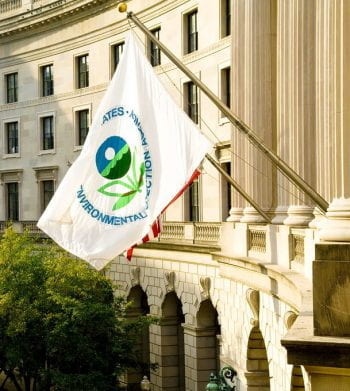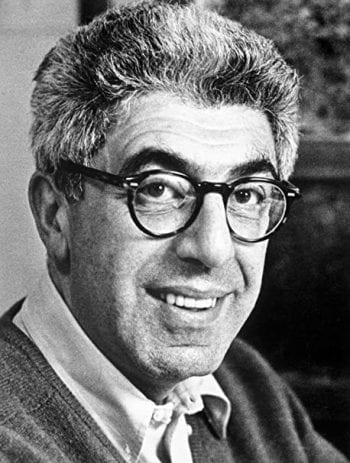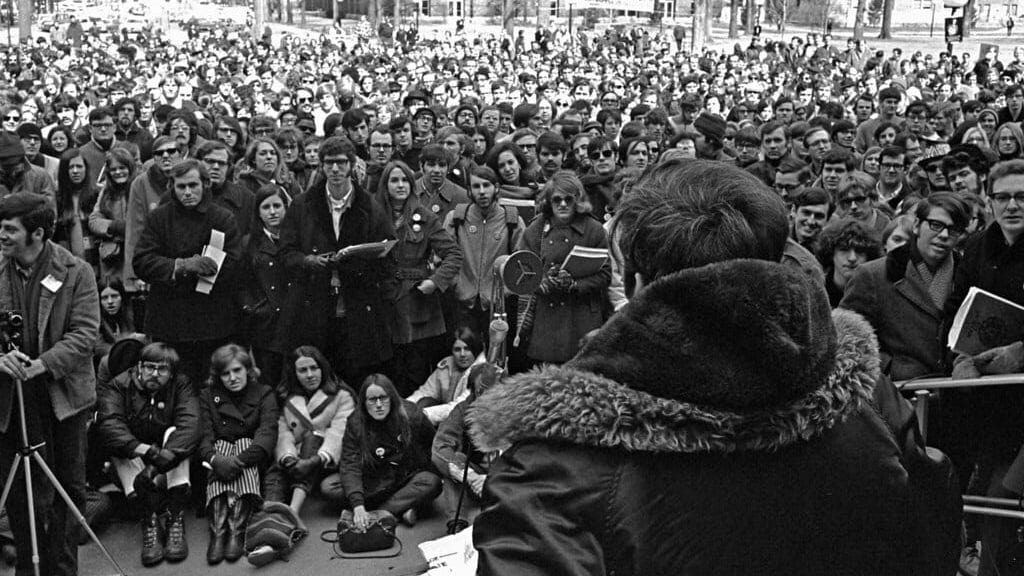On the first Earth Day in 1970, 20 million people in the United States took a stand to demand a better way forward for our planet. Here we are 50 years later, ready to celebrate the achievements of the environmental movement, and give each other inspiration and motivation to keep fighting the fights of climate change, environmental degradation, and justice.
The history of Earth Day teaches us that advocacy and activism have been instrumental in triggering federal action and system changes. Regulations, policies, and incentive programs designed to protect the health of people, wildlife, and natural resources have had measurable impacts over the past 50 years.
But “despite decades of environmental progress, we find ourselves facing an even more dire, almost existential, set of global environmental challenges, from loss of biodiversity to climate change to plastic pollution, that call for action at all levels of government,” said Denis Hayes, the organizer of the first Earth Day in 1970 and Earth Day Network’s Board Chair Emeritus.
As progress is slowing down, climate change impacts are growing. Adversaries are becoming better financed, so we must accelerate the social and ecological transformations on the scale of the crisis we face. The world needs us – and our actions – for Earth Day 2020. From writing letters to your reps to joining a climate strike, to hosting a cleanup event in your community and to supporting a sharing economy, ways to have an impact are countless.
The annual Earth Day celebration and call to action provides a positive and future-looking invitation for a broad range of people and organizations to come together to catalyze change and celebrate year-round work. We must at once balance individual actions to live, work, and play in alignment with environmentally and socially conscientious values while calling on leaders in private and public sectors to follow suit. Policies at scale are an essential requirement for enabling communities to reach their highest potential.
Click the drop-down tabs below for a quick look back at the progress and set backs of environmental movements from the past 50 years, at both the national and local levels. Below, learn ways you can remotely celebrate Earth Day from wherever you are.
Just a few months after the first Earth Day protests, in December of 1970, the Environmental Protection Agency (EPA) was created with the mission to “protect human health and the environment” through regulation issuance, environmental assessment, monitoring, research, standard setting, enforcement, education and grants. Some of the EPA’s major legislation milestones include the Clean Air Act of 1970, the Clean Water Act of 1972, the Safe Drinking Water Act of 1974, and the Federal Insecticide, Fungicide, and Rodenticide Act of 1976.

These landmark environmental laws led to significant reductions in pollution levels of our water, air, and soil, which resulted in enhanced public health. Between 1970 and 2017, key pollutants have decreased (-71%), even as we’ve used more energy (+44%), driven more miles (+184%) and seen our economy grow (+246%). After the Clean Air Act passed, median blood lead levels of children living in the US have decreased over 90%, because new cars, trucks and buses pollute 99% less. [Data source: American Museum of Natural History]
The Endangered Species Act (ESA) of 1976 was a milestone in protecting species and the ecosystems upon which they depend. Combined with bans on key pesticides, the ESA has enabled some species to come back from the brink, such as bald eagles whose nesting pairs are ten times more numerous today than in the early 70’s. However, the overall trend is that wild animal populations have dramatically shrunk in the past few decades. The World Wildlife Fund’s 2018 Living Planet report demonstrates a global wildlife population loss of 60% between 1970 and 2014. Since Earth Day 1970, over 170 animal species have been declared extinct, causing academics to call this phenomenon a sixth mass extinction.
In 1980, Congress passed the Comprehensive Environmental Response, Compensation, and Liability Act (CERCLA), also known as “Superfund”. CERCLA imposed responsibility on the persons or companies responsible for closed and abandoned hazardous waste sites. While hundreds of contaminated lands have been restored since this enactment, thousands more contaminated and polluted sites remain, affecting disproportionally low-income populations and communities of color. The 1982 mass protests in Warren County (NC) against a plan to store contaminated soil near a residential community marked the beginning of the environmental justice movement. Despite growth in the movement, successive federal administrations have failed to implement any serious policy that protects communities vulnerable to environmental injustices.

In 1987, the world banned Chlorofluorocarbons (CFCs). In the decades since, the ozone layer has stabilized and begun to recover, preventing an estimated 2 million cases of skin cancer per year. International efforts continue to regulate and phase out ozone-depleting substances such as HCFC refrigerants.
In the past few decades, our country has made the choice to focus on topics such as air, water, and soil pollution, leaving out some critical issues such as land-use, and our dependency on fossil fuels for energy sources. Climate change is “the defining issue of the 21st century, yet we do not have an American climate change law to address issues such as transforming our energy system and adapting our coastlines for rising sea levels”, said Noah Sachs, professor and director of the Merhige Center for Environmental Studies.
Since 1970, our carbon dioxide emissions have been multiplied by 2.4, accelerating and amplifying climate change and global warming. Our global surface temperature is now 1°C higher than the 20th Century average, leading to ice melting and sea levels to rise.
In the 2015 Paris Agreement, 197 countries finally agreed to dramatically reduce greenhouse gas emissions. The Agreement aims to strengthen the global response to the climate crisis by keeping a global temperature rise this century well below 2 degrees Celsius above pre-industrial levels (the equivalent of a 3.6°F rise).

2017 marks the birth of the Sunrise Movement, a youth-led movement that advocates for political action on climate change. Among other things, the Sunrise Movement is a strong proponent of the Green New Deal, “a 10-year plan to mobilize every aspect of American society to 100% clean and renewable energy by 2030, a guaranteed living-wage job for anyone who needs one, and a just transition for both workers and frontline communities.” The movement offers a vision for a new system that balances social justice and environmental reality, and restores our democracy by putting “people over profit“.
Note: this is not a comprehensive and exhaustive history of environmental progress in the past 50 years. Rather, it selects a sample of milestones and metrics to illustrate general trends.
The 1970’s and 1980’s were punctuated by a series of environmental wins in Missouri. Legislations to conserve land, soil, and water, and to protect workers’ health against pollution, were made possible by strong partnerships between environmental organizations such as the Missouri Coalition for the Environment and the Sierra Club; and worker unions and consumer organizations such as the Consumers Council of Missouri, and the Missouri Public Interest Research Group.
The first celebration of Earth Day in St. Louis took place in April 1989. One year later, the celebration moved to Forest Park where it established itself as one of the most prominent and attended Earth Day events in the nation. The St. Louis Earth Day Festival, coordinated today by local nonprofit earthday365, continues to be a regional favorite, inspiring generations of St. Louisans to value the environment and creating pathways for dialogue across difference.

Did you know? Barry Commoner, a leading ecologist among the founders of the modern environmental movement, was a WashU professor for over 30 years. An early “eco-socialist”, Commoner was a systems thinker known for quotes such as “Everything is connected to everything else.” A staunch opponent of nuclear weapons testing, he was a part of the team that conducted the “Baby Tooth Survey” that connected the presence of Strontium 90 in children’s teeth as a direct result of nuclear fallout.

Understanding the robust local history of environmentalism provides scaffolding for more robust and impactful collaborations and actions in the present. It accelerates change, prevents new leaders from building from scratch, and provides hope and perspective.
Join panelists David Wilson, Jean Ponzi, Heather Navarro, and Cassandra Hage to learn from the history makers and keepers of Earth Day in St. Louis. (Recorded on April 19, 2020)
Celebrate Earth Day to Accelerate Positive Change
April 18 – 26 – Virtual St. Louis Earth Day – Join earthday365 and friends for daily live content and links highlighting amazing work in our community toward a more sustainable future. In these difficult times, the Festival will feature storytelling with a focus on hope, celebration, and possibility. The festival is free but registration is encouraged.
April 1 – 30 – Earth Day Ecochallenge – Join the WashU team, “WashU Together” in this 30-day environmental and social engagement program.
April 22 – Digital Earth Day. Join the Earth Day Network for 24 hours of action in a global digital mobilization that drives actions big and small, gives diverse voices a platform, and demands bold action for people and the planet. The digital landscape will be filled with global conversations, calls to action, performances, video teach-ins and more.
April 22 – Happiness and Sustainability around the Earth, 24 hour Webinar. Join experts from SDSN (Sustainable Development Solution Network) as they share how they are building a happier world.
Further Learning
- Earth Day 50th Anniversary – Earth Day Network
- Happy Birthday! Earth Day and EPA Celebrate 50 Years – Green Living magazine
- The Modern Environmental Movement (1970-1990) – PBS
- [Video] A Brief History of Environmental Justice – ProPublica
- [Video] A Message From the Future With Alexandria Ocasio-Cortez – The Intercept and Naomi Klein
- [Video] Earth Day 1970 – 2019: No Time To Waste – American Museum of Natural History
- [Video] Earth Day 1970 – 2018: Sea Changes – American Museum of Natural History
- [Video] Earth Day 1970 – 2017: What’s Changed? – American Museum of Natural History
